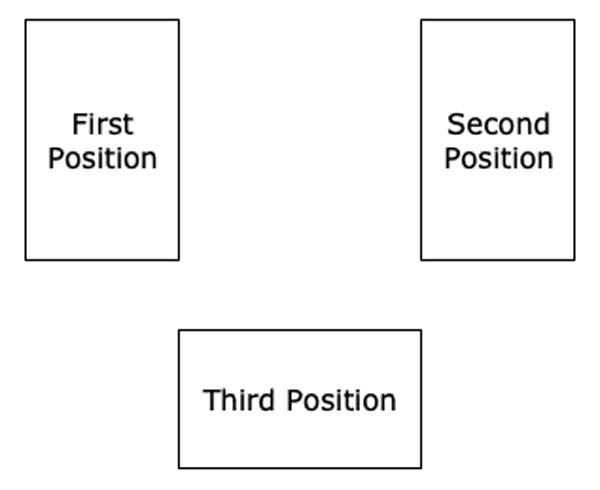Kinaesthetic Activities
Role play
Role-playing refers to the changing of one's behaviour to assume a role, either unconsciously to fill a social role, or consciously to act out an adopted role.
Role playing is ideal for people who think kinaesthetically. For example, it can enable a group of employees to act out work scenarios. It opens communications, and for the amount of time when it puts a player 'on-the-spot,' it also gives a great deal of confidence and develops camaraderie among those participating in (doing) the role play situations.
Role playing is a means of gaining an experience of an imagined situation or of being another person. It can elicit valuable information. Role playing is also an excellent way for people to practise for an upcoming event.
Perceptual positions
The three perceptual positions are:
First Position: seeing, hearing and feeling the situation through your own eyes, ears and feelings. You think in terms of what is important to you, what you want to achieve.
Second Position: stepping into the shoes of the other person and experiencing (seeing, hearing and feeling) the situation as if you were them. You think in terms of how this situation would appear or be interpreted by the other person.
Third Position: standing back from a situation and experiencing it as if you were a detached observer. In your mind, you are able to see and hear yourself and the other person, as if you were a third person. You think in terms of what opinion, observations or advice would someone offer who is not involved. By disconnecting you from the emotions involved, this position helps you take an objective view of both behaviours and look for opportunities to respond differently in order to achieve a different and more positive outcome.
All three positions are of equal importance and it is useful to consciously or unconsciously cycle through these positions as we go about our daily activities.
Sometimes we get stuck in one of these positions.
Someone who lives his/her life in first position tends to focus on his/her own needs rather than the needs of others – a “self-centred” attitude.
Someone, who lives their life primarily in second position, is more conscious of other people at the expense of their own needs; they can be unassertive and burn themselves out be failing to look after themselves.
Someone who lives in third position can seem rather aloof, a disinterested observer of life, logical rather than emotional, failing to participate.

Another approach to perceptual positions involves looking at a situation from the viewpoint of several different people involved. For example, a strike looks very different from the viewpoint of a CEO, a worker, a customer and a supplier. A problem is almost always harder to solve if a person only appreciates their own viewpoint and not those of others involved.



